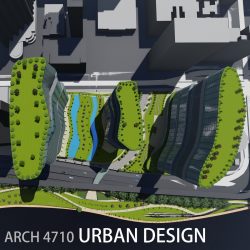National Architecture Accrediting Board (NAAB) Student Performance Criteria (SPC) / Assessment Methods
| National Architectural Accrediting Board (NAAB) Students Performance Criteria (SPC)/ Assessment Methods | |
| Learning Outcomes | Assessment Methods |
| Upon successful completion of this course the student shall be able to:
(Realm . Number) title [depth] |
To evaluate the students’ achievement of the learning objectives, the professor will do the following: |
| 1. (A.6) Use of Precedents [measured] ABILITY to examine and comprehend the fundamental principles present in relevant precedents and to make informed choices about the incorporation of such principles into architecture and urban design projects. |
1. Assess student work through a series of presentations and reports which require the understanding and application of precedents.
|
| 2. (A.8) Cultural Diversity & Social Equity [measured] UNDERSTANDING of the diverse needs, values, behavioral norms, physical abilities, and social and spatial patterns that characterize different cultures and individuals and the responsibility of the architect to ensure equity of access to sites, buildings, and structures.
|
|
ABILITY to demonstrate the skills associated with making integrated decisions across multiple systems and variables in the completion of a design project. This includes problem identification, setting evaluative criteria, analyzing solutions, and predicting the effectiveness of implementation.
|
3. Assess student work through a review of site analysis report, which has to demonstrate an understanding of existing conditions and potential ways of addressing site problems.
|
| 4. (D.1) Stakeholders Roles in Architecture [reinforced] UNDERSTANDING of the relationships among between the client, contractor, architect and other key stakeholders such as user groups and the community, in the design of the built environment. Understanding the responsibilities of the architect to reconcile the needs of those stakeholders.
|
|
UNDERSTANDING of the architect’s responsibility to the public and the client as determined by regulations and legal considerations involving the practice of architecture and professional service contracts.
|
5. Asses Student work through their understanding of local zoning laws and how they are implemented into the final design. This work will be reviewed to see how it incorporates the site amenities report.
|
UNDERSTANDING of the ethical issues involved in the exercise of professional judgment in architectural design and practice, and understanding the role of the AIA Code of Ethics in defining professional conduct.
|
6. Assess student understanding through their final design presentation, which needs to address the relationship of the architect to public, community and client needs.
|




